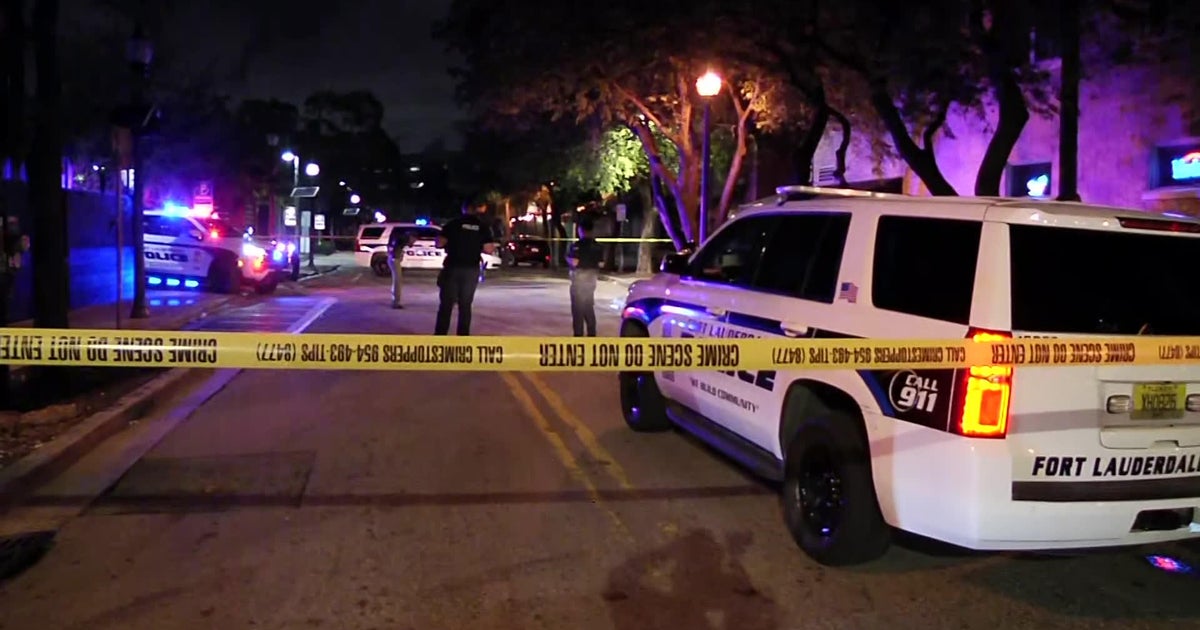Hurricane Sandy Makes Landfall In Cuba
HOLGUIN, Cuba (CBSMiami/AP) —Hurricane Sandy barreled across Cuba Thursday packing 105 mile an hour winds. The storm killed at least two people in the Caribbean and is now heading toward the Bahamas.
Hurricane Sandy rumbled across mountainous eastern Cuba as a Category 2 storm, bringing heavy rains and blistering winds that ripped the roofs off homes and damaged fragile coffee and tomato crops, but caused no known fatalities on the island.
Even as it pummeled Cuba's rural eastern half, Sandy refused to lose intensity as storms normally do when they cross over land, raising fears that small mountain villages still unheard from might not have been ready for its wrath.
"It crossed the entire eastern region practically without losing intensity or structure," said Jose Rubiera, the island's chief meteorologist.
GALLERY: HURRICANE SANDY SKIRTS SOUTH FLORIDA
The National Hurricane Center said Sandy emerged off Cuba's northeast coast around dawn and was moving north at 16 mph, with maximum sustained winds of 105 mph as it closed in on the central Bahamas.
Schools and government offices were closed across the Bahamas on Thursday and some residents in southern Ragged Island already reported downed tree branches. All airports, seaports and bridges in the Bahamas also will remain closed through Friday, the government announced.
Residents of Siboney, just outside the eastern Cuban city of Santiago, reported waves as high as 32 feet, with water coming as far as 115 feet inland. In Santiago itself, tin roofs were ripped off some homes, according to resident Yolanda Tabio, a 64-year-old retiree. She said a small Santiago church called San Antonio Claret was damaged, though there were no casualties.
"We're still wet, cleaning up leaves and branches that the wind brought down," she said. "It was very unpleasant."
Despite that, Cuba's second largest city was spared the worst of the storm's force, which slammed into the provinces of Granma, Holguin and Las Tunas.
Some 5,000 tourists at beach resorts in Holguin were evacuated ahead of the storm, along with 10,200 residents, according to Cuban media. Another 3,000 people in low lying areas of Las Tunas were moved away before Sandy arrived.
State-run media said at least 10 homes fell down in Holguin and that there was damage to coffee and tomato crops in Granma province but not as bad as had been feared.
Residents emerged from their homes early Thursday after a night without power, finding palm trees and some electric poles strewn across roads, blocking traffic.
Norje Pupo, a 66-year-old retiree in Holguin, was helping his son clean up early Thursday after an enormous tree toppled over in his garden.
"The hurricane really hit us hard," he said. "As you can see, we were very affected. The houses are not poorly made here, but some may have been damaged."
Still, Pupo said residents were used to such storms and would take the damage in stride. Cuba's communist government is known for its rapid response to natural disasters, and people on the Caribbean's largest island have long years of experience with hurricanes.
"We'll move forward," Pupo said. "We'll get out of this hole as we have many other times before."
There were no reports of injuries at the U.S. naval base at Guantanamo Bay in Cuba, but there were downed trees and power lines and all non-emergency personnel were still confined to their quarters Thursday after a night of heavy wind and rain, said Kelly Wirfel, a base spokeswoman.
Officials canceled a military tribunal session that had been scheduled for Thursday for the prisoner charged in the 2000 attack on the Navy destroyer USS Cole.
The hurricane center said that Sandy would likely still be a hurricane as it passes over the Bahamas later in the day. It also might bring tropical storm conditions along the southeastern Florida coast, the Upper Keys and Florida Bay by Friday morning.
A tropical storm warning was extended northward as far as Flagler Beach and a tropical storm watch was issued for the northeastern Florida coast.
Sandy also may combine with other weather systems to create a major storm over the northeastern U.S. next week, according to federal and private forecasters.
"It'll be a rough couple days from Hatteras up to Cape Cod," said forecaster Jim Cisco of the National Oceanic and Atmospheric Administration prediction center in College Park, Maryland. "We don't have many modern precedents for what the models are suggesting."
As Sandy crossed over Jamaica on Wednesday an elderly man was killed by a boulder that crashed into his clapboard house, police said. In southwestern Haiti, a woman died in the town of Camp Perrin after she was swept away by a river she was trying to cross, said Marie Alta Jean-Baptiste, head of the country's civil protection office.
Jamaican authorities closed the island's international airports and police ordered 48-hour curfews in major towns to keep people off the streets and deter looting. Cruise ships changed their itineraries to avoid the storm, which made landfall Wednesday afternoon near the capital, Kingston.
In some southern towns on Jamaica, rushing floodwaters carried crocodiles out of their habitat in mangrove thickets. One big croc took up temporary residence in a family's front yard in the city of Portmore.
Stranded business travelers and a smattering of locals rode out the hurricane in hotels clustered along a strip in Kingston's financial district. Some read prayer books or novels, while others watched movies or communicated with loved ones on computers.
(TM and © Copyright 2012 CBS Radio Inc. and its relevant subsidiaries. CBS RADIO and EYE Logo TM and Copyright 2012 CBS Broadcasting Inc. Used under license. All Rights Reserved. This material may not be published, broadcast, rewritten, or redistributed. The Associated Press contributed to this report.)



